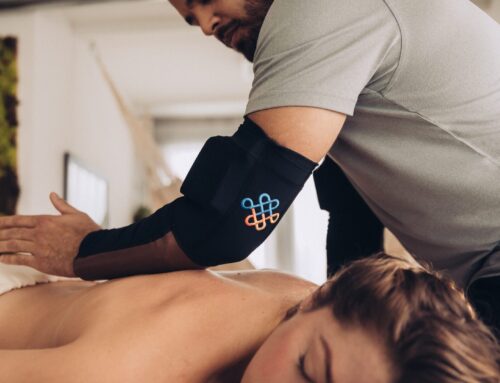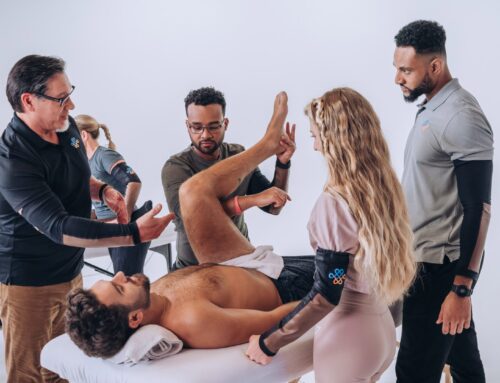Heat therapy has a long history, dating back to 2,750 BC when people experimented with electric eels for healing purposes. While those early attempts weren’t particularly successful, the development of Transcutaneous Electrical Stimulation (TENS) in 1975 marked a significant advancement in using electricity to treat chronic pain. Recently, this approach has been adopted to alleviate pain, elevate endorphin levels, and activate neuromodulators. Early practices of heat therapy involved volcanic sources like mud baths and thermal baths, with Hippocrates and subsequent cultures recognizing the therapeutic benefits of heat in treating muscle spasms, illnesses, and skin conditions.
The science behind heat therapy is fascinating. Increasing the temperature of the skin enhances blood flow to the targeted area, boosts oxygen uptake, and accelerates tissue healing. Additionally, heightened tissue temperature amplifies metabolic rates and enzymatic activities, while vasodilation and increased circulation aid in removing toxic metabolites, enhancing the migration of white blood cells, and increasing oxygen delivery. Heat therapy also reduces the firing of certain muscle spindle efferents, thereby decreasing muscle contractions and accelerating tissue healing.
The purpose of this article is to elucidate the distinctions between infrared and thermal heat, their applications, and their importance for manual therapists and businesses.
What is Heat Therapy?
Heat therapy, also known as thermotherapy, involves applying heat to damaged areas of the body to alleviate persistent pain associated with muscle stiffness, sensitivity, and cramping.
Types of Infrared Heat
Infrared heat comes in three categories: short wave, medium wave, and long wave. These waves, which are part of natural sunlight, have varying effects on heating objects and people. Short-wave infrared provides instant heat, while long-wave infrared takes longer to warm up but penetrates deeper into tissues.
Mechanism of Infrared Heat
Studies have shown that infrared therapy can elevate blood circulation and relieve fatigue in athletes. This therapy delivers certain wavelengths of light to injured sites, promoting cell regeneration, improving circulation, and providing pain relief. Infrared light penetrates deeply into the skin, reaching muscles, nerves, and even bones, thanks to its ability to relax arteries, reduce oxidative stress, and regulate blood pressure.
Thermal Heat
Incorporated into manual therapy sessions through techniques like table warmers, hot towels, and heated body wraps, this therapy improves tissue elasticity, decreases pain, and induces warmth by transferring thermal energy to the skin, which then penetrates into the underlying tissues to provide pain relief, increase blood flow, and enhance cellular metabolism.
The main difference between thermal heat and infrared heat lies in their mechanisms of action and depth of penetration. While effective for many conditions, thermal heat may have limitations in reaching deeper tissues and organs.
Benefits for Manual Therapists
Manual therapists can greatly benefit from the use of infrared heat in their practice. Vince Guagliano, Exoarmer CEO states “I would like to say that for the therapist, the infrared heat makes our job easier. For the therapist, the heated tissues are more easily manipulated due to increased blood flow and a change in consistency of the tissues through a mechanism called thixotropy. The infrared heat also promotes deeper relaxation for the client, which is also helpful for the therapist.”
How to Use Infrared Heat Therapy in Manual Therapy
Infrared heat therapy is becoming an integral part of manual therapy due to its ability to enhance therapeutic outcomes. One innovative application is the use of proprietary infrared devices, such as the ExoArm Infrared Sleeve. This sleeve heats up to 150 degrees and is worn by the therapist to deliver deeper, more effective massages.
The ExoArm Infrared Sleeve provides significant benefits:
- Deep Tissue Penetration: The high temperature allows for deeper penetration into muscle tissues, enhancing the effectiveness of manual therapy techniques.
- Improved Tissue Manipulation: The heat increases blood flow and changes the consistency of tissues, making them more pliable and easier to manipulate.
- Enhanced Relaxation: The deep heat promotes relaxation for the client, which aids the therapist in performing more effective treatments.
Therapists using the ExoArm Infrared Sleeve report that the device not only helps in delivering superior massage results but also reduces their physical exertion, making their practice more sustainable and less physically demanding.
The deeper penetration capabilities of infrared heat allow for targeted relief and accelerated healing of deep tissues, muscles, and even bones. This aspect not only addresses surface discomfort but also targets the root of musculoskeletal issues, providing more comprehensive and lasting results for patients.
Conclusion
Understanding the distinctions between infrared and thermal heat is crucial for manual therapists aiming to provide the best care for their clients. Infrared heat, with its ability to penetrate deeper and promote extensive physiological benefits, stands out as a superior option for targeting deep tissue issues and enhancing overall therapy outcomes. As heat therapy continues to evolve, incorporating advanced technologies like infrared heat can lead to improved therapeutic experiences and outcomes for both therapists and clients.
Sources:
– USA Health and Wellness Blog: [The History of Heat Therapy](https://www.usahealthandwellness.com/blogs/usa-health-and-wellness-blog-health-and-wellness-discussion-reviews-and-education/the-history-of-heat-therapy)
– Spine-health: [Benefits of Heat Therapy](https://www.spine-health.com/treatment/heat-therapy-cold-therapy/benefits-heat)
– Top Doctors: [Heat Therapy Definition](https://www.topdoctors.co.uk/medical-dictionary/thermotherapy)
– NCBI: [Infrared Therapy Study](https://www.ncbi.nlm.nih.gov/pmc/articles/PMC5505738/)
– News Medical: [How Does Infrared Therapy Work](https://www.news-medical.net/health/How-Does-Infrared-Therapy-Work.aspx)
– Respiratory Health: [Thermal Massage Therapy](https://respirept.com/physical-therapy-treatments/thermal-massage/)
– Infrared Heating Supplies: [Are Heat and Infrared the Same?](https://infraredheatingsupplies.com/are-heat-and-infrared-the-same/#:~:text=Heat%20refers%20to%20thermal%20energy,them%20to%20increase%20in%20temperature)




